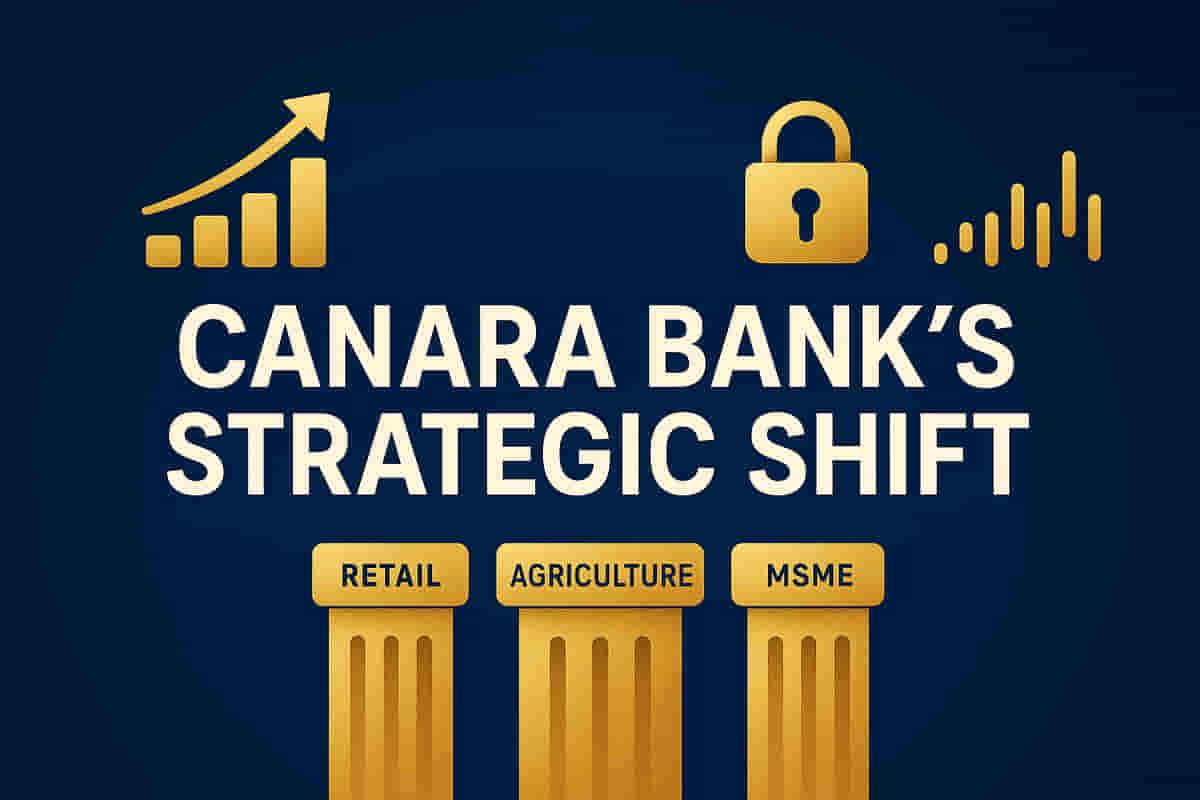Canara Bank Prioritizes Quality Growth in RAM Segment, Avoids Corporate Loan Rate War
Banking/Finance
|
31st October 2025, 1:28 PM

▶
Stocks Mentioned :
Short Description :
Detailed Coverage :
Canara Bank is implementing a strategic shift to prioritize growth in its Retail, Agriculture, and Micro, Small, and Medium Enterprises (MSME) segments, collectively known as the RAM portfolio. This move is aimed at achieving quality growth and enhancing profitability. Managing Director and CEO Satyanarayana Raju has clearly stated the bank's intention to avoid participating in aggressive pricing competition, or an 'interest rate war,' within the corporate loan market, as this practice significantly erodes profitability. The bank's strategic objective is to establish a balanced credit portfolio with a 60% allocation to RAM and 40% to corporate lending. Raju anticipates that the RAM segment will grow at a faster pace than the corporate loan book over the next two quarters.
Financially, Canara Bank reported a robust 19% year-on-year increase in net profit for the second quarter of Fiscal Year 2026, reaching ₹4,774 crore. However, its Net Interest Income (NII), a key measure of profitability from lending, saw a slight decline of 1.87%, falling to ₹9,141 crore from ₹9,315 crore in the corresponding period of the previous year. Margins have experienced some compression due to the prevailing interest rate environment. The bank expects Net Interest Margins (NIMs) to stabilize soon and recover gradually as deposits are repriced and higher-cost deposits are replaced.
The bank's board has approved a significant capital raise of ₹9,500 crore for FY26, comprising ₹6,000 crore through Tier II bonds and ₹3,500 crore via Additional Tier I (AT1) bonds. This capital infusion is expected to be completed in the second half of the fiscal year.
Growth drivers include vehicle loans, which are seeing momentum with over 100% year-on-year growth partly due to GST reductions, and housing loans, growing at over 15%. Canara Bank is also actively financing infrastructure and real estate construction, with its exposure growing in line with the corporate portfolio.
Furthermore, the bank is aggressively digitizing its operations, aiming to bring the entire RAM portfolio onto digital platforms within the next one to two quarters. Currently, approximately 94% of all its transactions are digital.
Impact: This strategic focus on the high-margin RAM segment and avoidance of margin-diluting corporate loan competition is expected to boost Canara Bank's overall profitability and asset quality. The capital raise will strengthen its financial foundation, supporting future growth. This prudent approach by a major public sector bank is likely to be viewed positively by investors, potentially enhancing confidence in its financial strategy and future performance. Rating: 7/10.
Difficult Terms: * Retail, Agriculture, and MSME (RAM) segment: Loans provided to individual customers (retail), farmers and agricultural businesses (agriculture), and small and medium-sized enterprises (MSME). * Interest rate war: A competitive environment where lenders aggressively lower interest rates on loans to attract borrowers, often at the expense of profitability. * Net Interest Income (NII): The difference between the interest income earned by a bank on its assets (like loans) and the interest paid out on its liabilities (like deposits). * Net Interest Margins (NIMs): A profitability ratio that measures the difference between interest income earned and interest paid out, relative to the bank's interest-earning assets. It reflects how efficiently a bank earns from its lending activities. * Capital raise: The process by which a company obtains funds, typically by issuing new shares or debt instruments like bonds. * Tier II bonds: A type of debt instrument that ranks below senior debt but above equity in terms of repayment priority, used to strengthen a bank's capital base according to regulatory requirements. * Additional Tier I (AT1) bonds: Perpetual debt instruments that are subordinate to both senior debt and Tier II capital, designed to absorb losses and meet regulatory capital adequacy ratios. * GST cuts: Reductions in Goods and Services Tax rates, making products like vehicles more affordable and stimulating demand. * Lease rental discounting: A type of loan where a bank provides funds against the future rental income expected from a property.